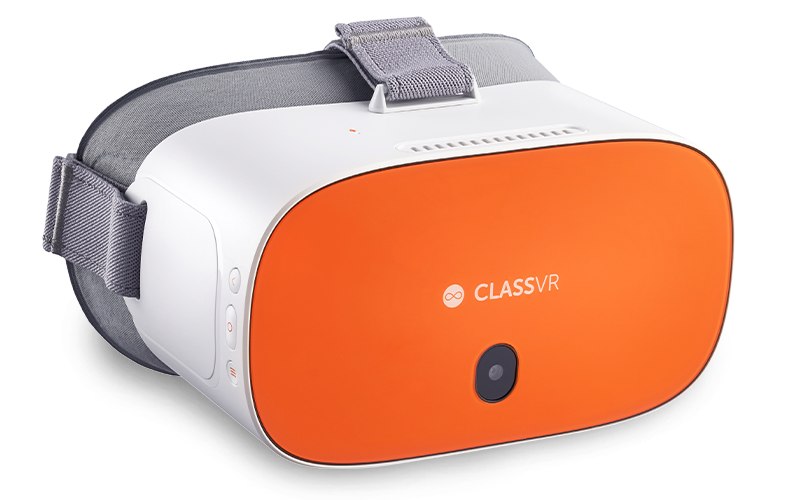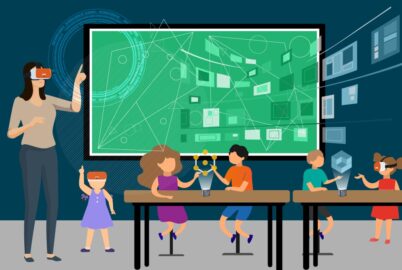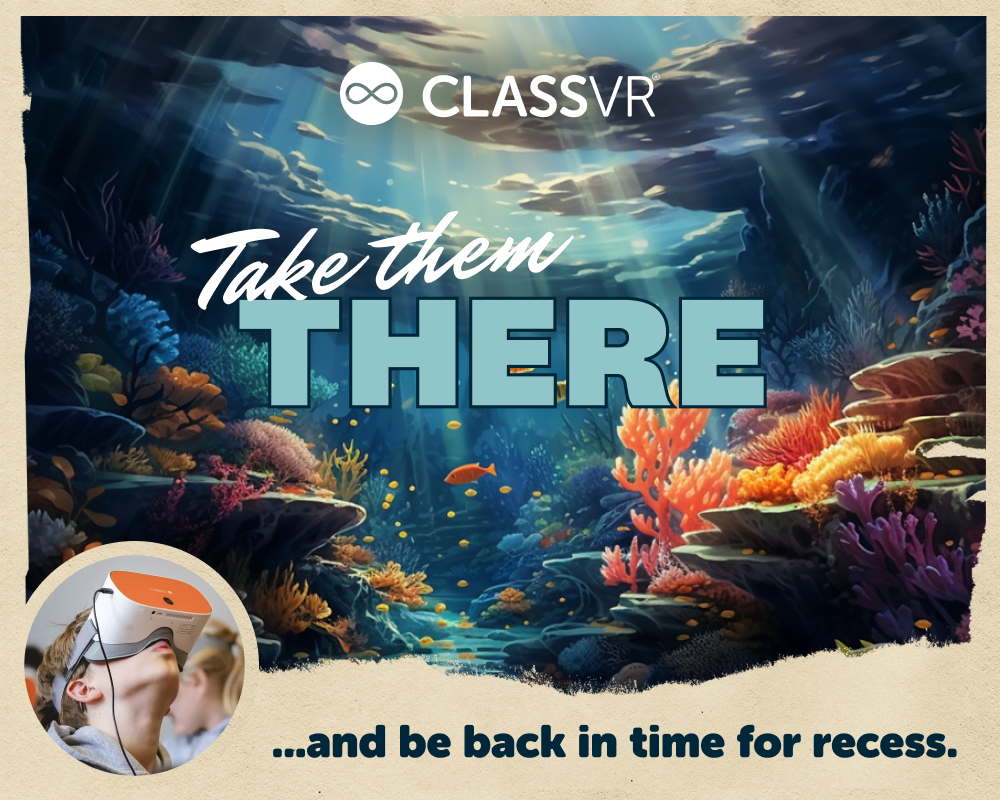
The ESSER funding drive is having a once-in-a-generation impact on the nation’s K-8 schools. With teachers and policy-makers newly empowered to embrace innovation, new methodologies and technologies are being introduced, improving learning outcomes for students and helping to mitigate the pandemic’s lingering impacts.
ClassVR is one of the new technologies currently expanding its footprint in US schools. Already in use in more than 100,000 classrooms worldwide, the easy-to-use ClassVR headsets provide quick access to hundreds of VR and AR content assets. K-8 educators can even upload their own content. Students can explore creations made within CoSpaces, the software platform that allows them to build objects and environments in 3D, using either simplified or advanced coding. Teachers can also upload 360-degree images or videos though ClassVR’s seamless integration with ThingLink.
There are a number of ways in which the adoption of ClassVR will have positive, lasting effects on a K-8 school – for its students and its faculty alike.
Table of contents
Mitigating learning loss
ClassVR offers immersive, interactive learning experiences that can help bridge the learning gaps caused by the disruptions of the pandemic. ESSER funding encourages investments in tools and technologies that address learning loss, and ClassVR does just that by engaging students, enhancing comprehension, and greatly improving knowledge retention.
Bolstering technology infrastructure
The ESSER funding program encourages grant applications that will be put to use investing in K-8 schools’ technology infrastructure. By providing all students with access to AR/VR devices and content, ClassVR goes a long way in boosting and future-proofing schools’ edtech capabilities.
ESSER encourages innovative, technology-driven approaches to education. ClassVR represents cutting-edge technology that aligns with this objective, preparing students for the digital age while making their learning feel exciting and relevant.
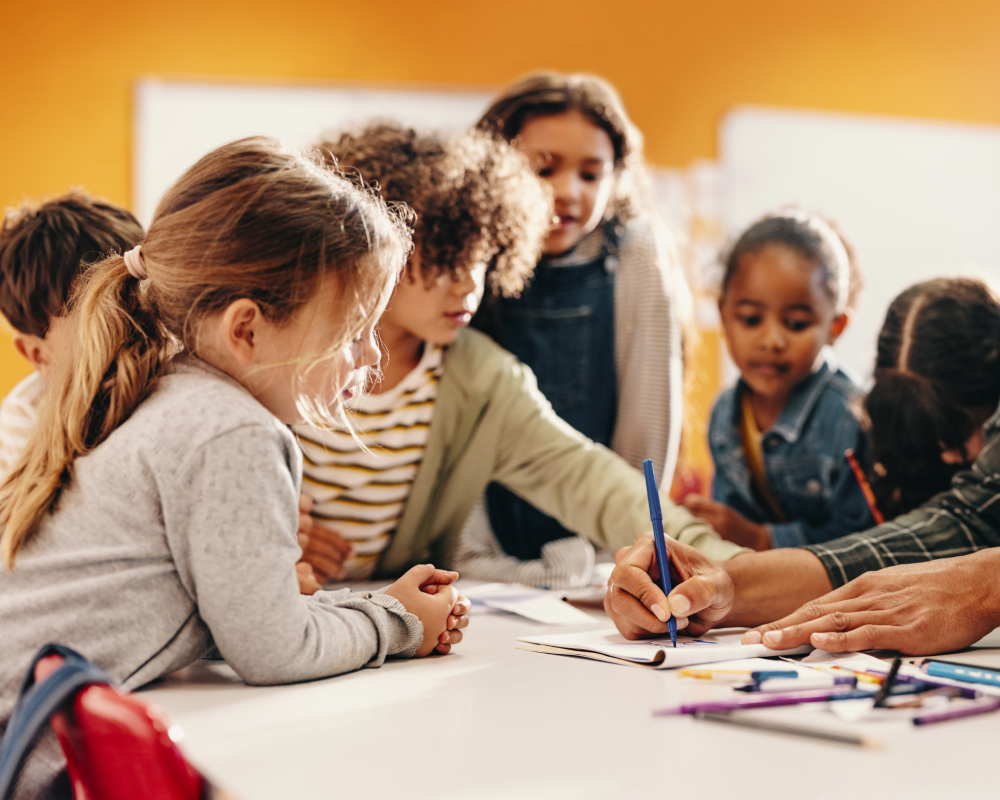
Equity and inclusivity
The ESSER funding program places a strong emphasis on improving equity in education. By introducing ClassVR, schools can promote equity by providing all students, regardless of their socioeconomic background – and any associated digital divide issues – with access to immersive learning experiences.
Enhanced engagement
ClassVR’s arresting, interactive content is purpose-designed to foster student engagement. And as every educator knows, engaged students are more likely to stay on track academically. As such, ClassVR is a powerful tool for K-8 schools aiming to address the pandemic's lasting impact on student motivation and participation.
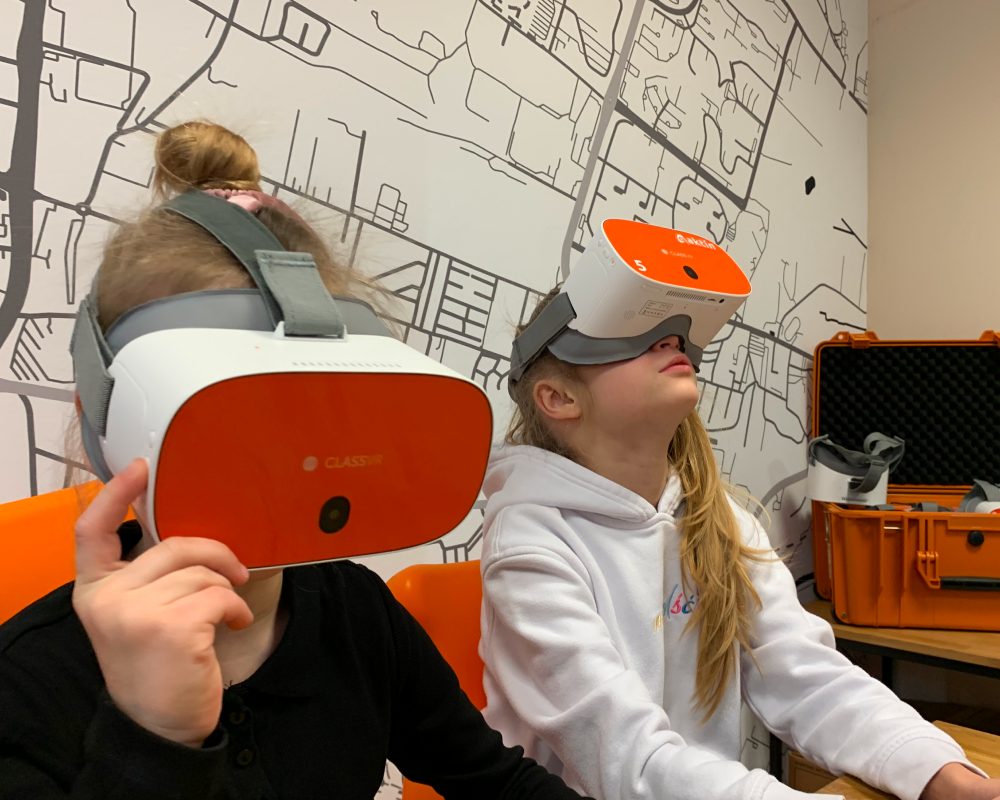
Supporting student wellbeing
The emotional toll wrought by the pandemic is a key focus of the ESSER program. ClassVR can contribute to K-8 students’ wellbeing by providing them with therapeutic and calming VR experiences. In doing so, it supports the holistic development of students by addressing their SEL needs.
K-8 case study: Crafting creative landscapes with ClassVR
Lisa Johnson is Technology Director at St. Walter School, Roselle, Illinois. “These kids really want this technology,” she says. “Their engagement level is so high with ClassVR. That can sometimes be frightening for those of us who are adults and not used to [technologies like this]. But we’ve got to get out of our comfort zones and start bringing it to them.”
Lisa has been working with K-8 pupils to build creative and imaginative virtual worlds in CoSpaces, which they can then ‘visit’ through ClassVR – fostering collaborative learning and encouraging peer feedback.
“Our third-graders went into CoSpaces and built the setting of the book The One and Only Ivan,” says Lisa. “They were so creative. The students needed a lake, so they used other objects and transformed them in CoSpaces. We had someone create a lake by taking a dog bowl, making it blue on the outside, and twisting it!
“Then I went back a few days later when they were done, and told them we’d explore the best creations in ClassVR. It’s like hanging up the best papers in the hall. The lesson became about more than just recreating the setting of the book. It was also about how each student used their imagination and created their content in CoSpaces.
“The goal is for the kids to keep creating their own content, and to create content for other kids to experience. For example, our eighth-graders could be creating content for our first-graders to use and learn from through ClassVR. Or, instead of giving students a grade at the end of a topic, we'll use their creations instead. If they can accurately create a setting from a book they're reading, it shows they’ve understood the characters, setting, and plot, all while getting creative.”
K-8 case study: Exploring living cells with ClassVR
Drewe Warndorff teaches science to seventh- and eighth-grade students at Hartwell Elementary School, Cincinnati. She uses ClassVR, and its ever-expanding content library, to boost engagement and retention, and to bring abstract scientific concepts to life.
Drewe recently used ClassVR, in conjunction with the CoSpaces app, to allow students to create and explore living cell models.
“I began by outlining the objective of creating a digital 3D model of a plant or animal cell with five identifiable organelles,” says Drewe. “Next, I led a digital software tutorial, in which I gave a brief demonstration of how to use the digital design software, including how to add shapes, remove sections, and modify size.
“We focused on 3D cell model creation, whereby the students used the software to create individual cell models that met the project requirements. The students submitted their .stl files, I converted them to .glb format, then uploaded the files to the ClassVR playlist.
“From there, I was able to provide the students with an AR/VR ‘cell experience’, where they could view their completed cell models using the ClassVR headsets. The students were able to then identify any imperfections in their models in order to make modifications to their original files.
“By applying their content knowledge to a digital format, they were solidifying their content understanding and gaining technological skills necessary for thriving in a 21st-century environment.”
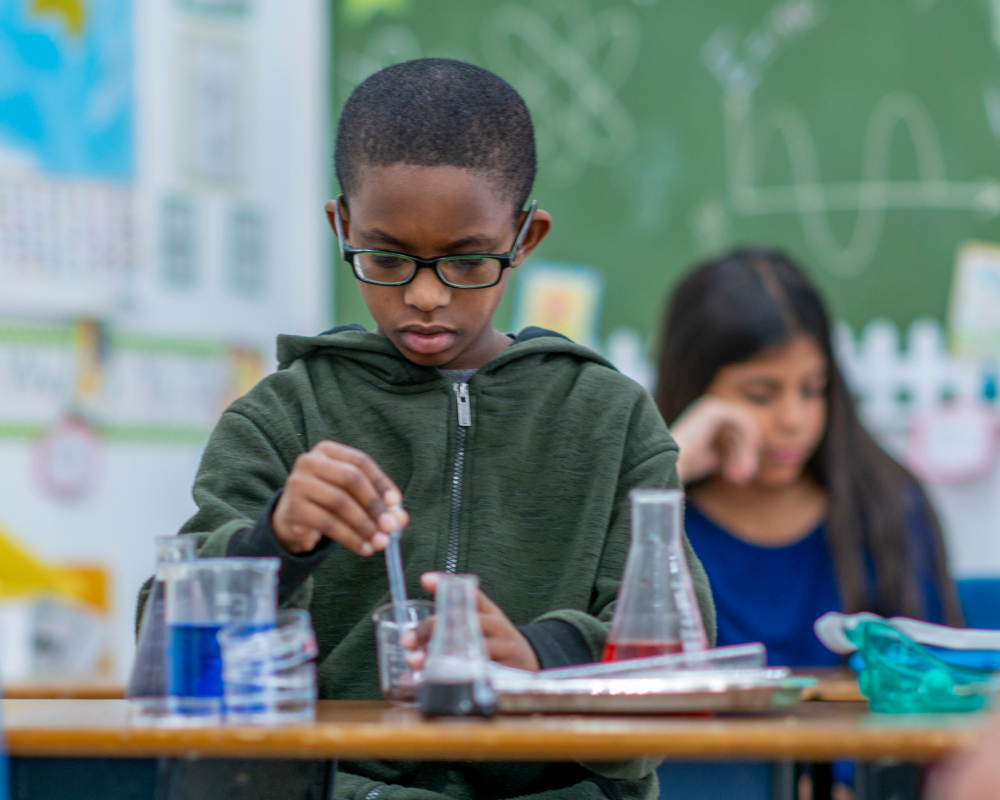
K-8 case study: Imbuing calm with ClassVR
Amanda Hunt is Library Media Specialist at Oak Run Middle School, New Braunfels, Texas. She wanted to use ClassVR to create a mindful space for students, reducing their anxiety around tests through visual coping strategies.
“We have students in our reading intervention classes, as well as English Language Learners (ELL), who struggle with test anxiety,” says Amanda. “I put together what I called a ‘Happy Places’ collection in the ClassVR Portal that they could visualize during a test, helping calm some of their anxiety and provide them with coping strategies.
“The objective was for students to visit a variety of locations; from the top of a snow-covered mountain, where it’s quiet and peaceful, to a sandy beach where they could hear the ocean waves, and many things in between. I chose my favorite calming locations, and places I thought the students would also find calming and enjoyable. I used images and videos from the ClassVR library.
“At the end of the lesson, they had to pick one and discuss or write about it so they would remember it for testing the following week. This process was part of the strategy in encouraging students to visualize a calming place to detach themselves from the immediate feelings of test anxiety.
“Students never would have been able to have this experience without ClassVR headsets and the available photos and videos. Describing something in words, or even showing a 2D image or video, is nothing compared to the impact of a VR experience. Students feel like they’re actually there. This effect cannot be created with anything else I’ve used in education thus far.
“Students were talking about this lesson for weeks. Teachers across the campus came to view and join in, and we had students tell us after testing how much the lesson had helped with their anxiety when they got stuck. They didn’t panic like they usually would. Instead, they imagined their ‘happy place’, and then were able to continue on with the test.
“That’s all the proof I needed on how important and vital this lesson was, and the impact ClassVR has had on our students, our teachers, our campus, our teachers, and myself in the library.”
Want to see ClassVR in action? Book a free, no-obligation, one-hour demo.
